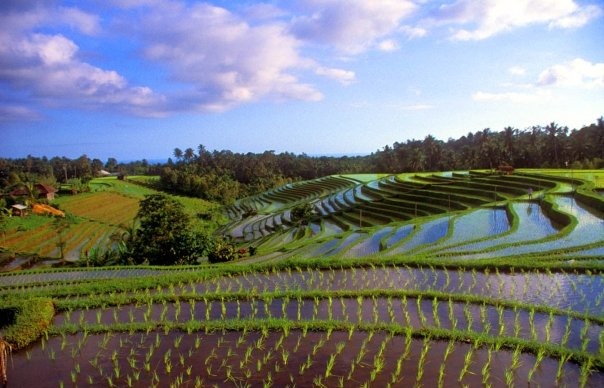If you’ve ever scrolled through Instagram or Pinterest, you’ve likely stumbled upon breathtaking photos of people soaring through the air on colorful swings against the backdrop of lush green rice terraces in Ubud, Bali. The Bali Swing has become one of the hottest tourist attractions, offering an adrenaline rush while delivering those perfect Instagram-ready shots. But while swinging high above the emerald landscape might seem like an innocuous way to enjoy nature, have you ever taken a moment to consider the environmental impact of such operations?
A Personal Experience
I remember the first time I visited Ubud. The lush greenery and tranquil rice fields captured my heart instantly. Enveloped by nature, I was excited about trying the Bali Swing. At the site, I was met with a flurry of tourists, all eager for their moment of glory suspended in mid-air. I could feel the excitement, but a nagging question lingered in my mind—what was the cost of this thrill to the beautiful environment surrounding us?
As I took my turn, soaring high above the vibrant landscape, the thrill was undeniable. But as I landed, I couldn’t help but look around and observe the bustling operation that was generating this flawless experience. The clattering of machinery, the throngs of people, and the cleared spaces for the swings gave way to a moment of reflection: What happens to the land that once existed before these attractions?
The Environmental Footprint of Bali Swing
Tourism, especially in a serene place like Ubud, can have significant repercussions on the local environment. The Bali Swing is entirely dependent on the natural beauty around it, and its popularity has led to several environmental impacts:
1. Deforestation and Land Clearing: In many cases, operations like the Bali Swing require clearing areas of trees and foliage to make way for swings and viewing platforms. This land clearing disrupts local ecosystems and wildlife habitats. Imagine walking through a once-dense forest now stripped bare, home only to the distant echoes of chainsaws and machinery.
2. Soil Erosion: The heavy foot traffic and land alteration can lead to soil erosion, especially in a place like Ubud where the terrain is often sloped. The natural vegetation that stabilizes the soil is sometimes removed, leading to unsightly muddy landscapes after thunderstorms.
3. Waste Management Issues: Increased tourism brings with it a pile of waste—plastic bottles, food wrappers, and other consumables. It’s not uncommon to spot litter on the trails leading to attractions. While most popular spots have bins, there’s often a disconnect in managing waste effectively, resulting in pollution of the local environment.
4. Water Resources: With the influx of visitors, local water resources can face strain. Touristic operations require vast amounts of water, both for amenities and maintaining the appearance of such lush landscapes. It led me to wonder—what happens to the water supply for the locals when the needs of tourists take precedence?
A Give-and-Take Relationship
It’s essential to acknowledge that tourism brings economic growth and job opportunities. For many locals, the Bali Swing and other attractions provide a livelihood. However, this relationship should foster a sense of responsibility toward the land.
Practical Advice for Tourists
– Choose Eco-friendly Operators: Before booking, research the operators. Look for those who practice sustainable tourism by maintaining natural habitats and minimizing waste. Some operators plant trees for every swing ticket sold or implement effective waste management systems.
– Reduce Your Footprint: Bring reusable water bottles and snacks in containers. It reduces the amount of waste you contribute to the environment.
– Respect Local Customs: Engage with locals and respect their customs and traditions. Supporting local businesses and artisans can help foster an ecosystem where tourism thrives alongside conservation.
– Advocate for Change: Once back home, share your experiences on social media, talking about the environmental impacts of such attractions. Raise awareness about sustainable practices in tourism, encouraging others to consider the environment during their travels.
Conclusion: A Swing Between Nature and Adventure
The Bali Swing in Ubud certainly offers an exhilarating experience, but it also presents an opportunity for critical reflection about our relationship with nature and tourism. Every swing creates a ripple, affecting the ecosystem that sustains local life. As travelers, it’s our duty to cherish and protect these beautiful destinations while enjoying the thrill they provide.In the end, I found that my heart became heavier the more I reflected on the swing experience. It taught me that we can enjoy adventure while respecting the environment—it just requires a conscious effort. So the next time you’re soaring above a beautiful landscape, take a moment, breathe in the beauty, and consider how you can leave it better than you found it.






